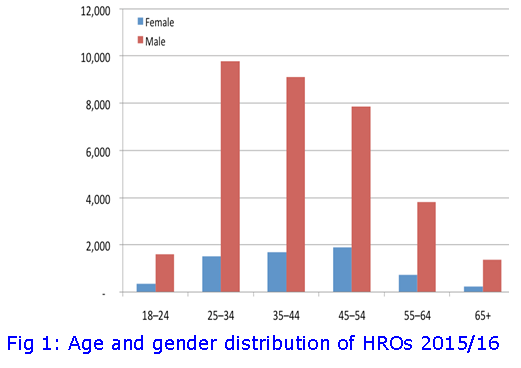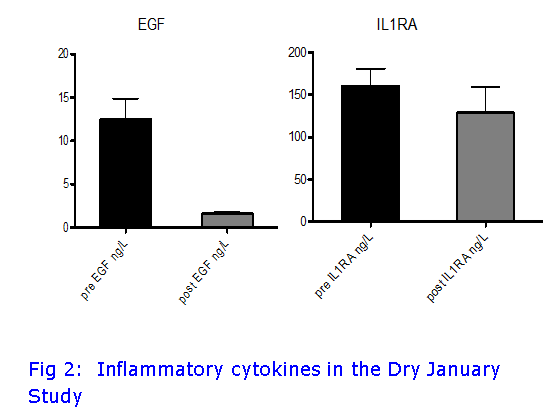The Benefits Of Dry January
The problems of alcohol misuse.
More than 90% of the population in the United Kingdom consumes alcohol with an estimated 75,000 individuals being alcohol dependent. It is estimated that potentially up to 20% of hospital admissions are related to alcohol excess. Drink-related deaths and alcoholic liver disease rates have more than doubled in the past 20 years. A high proportion of accidents both inside and outside the home are associated with subjects with high blood alcohol concentrations. Approximately 50% of murders are committed by people whilst under the influence of alcohol.
Detection of alcohol misuse
Detection of harmful alcohol intake relies on a combination of self-report questionnaires (CAGE – Cut down, Annoyed, Guilty, Eye-opener and AUDIT – Alcohol Use Disorders Identification Test) and biochemical markers. Most individuals with alcohol disorders tend to under-report when using the CAGE and AUDIT questionnaires. Measurement of ethanol itself in blood or urine detects consumption of alcohol in the previous 12-36 hours but cannot give any information about chronic intake. Urine ethyl glucuronide testing widens the time window to 48-72 hours and is used at Viapath’s laboratory at King’s College Hospital (KCH) as part of the monitoring of patients on the liver transplant waiting list who have a history of alcohol misuse. Other markers such as gamma-glutamyl transpeptidase (GGT) and Mean Cell Volume (MCV) are increased in chronic alcohol misuse but have poor specificity. GGT is raised in individuals with any form of liver disease and in people who are overweight or have diabetes mellitus – an increasing proportion of the population. Carbohydrate deficient transferrin (CDT) is the term given to forms of transferrin with less carbohydrate side-chains (zero or two) compared with normal individuals (three, four or five). CDT results from the direct effects of alcohol on the enzymes involved in the creation or destruction of the carbohydrate side-chains on the transferrin molecule rather than alcohol’s effect on organs such as the liver. CDT reflects alcohol consumption in the previous one to two weeks rather than the one to two days for ethanol measurements; similar in a way to glycated haemoglobin versus blood glucose in diabetes. Viapath’s CDT service was described in the third edition of the Newsletter. Please click here to read the article
The Driver & Vehicle Licensing Agency (DVLA) and alcohol
During the 1990s it became obvious that there was an increasing problem with drink driving and in particular with individuals who were either significantly over the legal limit of alcohol for driving or were serial offenders (High-risk offenders – HROs). HROs are individuals who were more than twice the drink-drive limit for blood or breath alcohol or had been disqualified more than once for driving under the influence of alcohol. To regain their licence at the end of a driving ban HROs have to undergo a medical examination and blood test to exclude alcohol and drug problems.
In an average year approximately 25,000 HROs seek the return of their driving licence. In 2008 the Department of Transport (DoT) began to realise that the biochemical markers GGT & MCV, in use for the assessment of HROs seeking the return of their driving licences, were often abnormal in individuals who were abstinent from alcohol. The DoT commissioned a study at KCH and South London & Maudsley Hospital (SLaM) with Professors Sherwood (KCH) and Wolff (Institute of Psychiatry) that showed that CDT had greater specificity than GGT or MCV in HROs (DoT Road Safety Reports 103/104 published January 2010 and available on the DoT website). This was particularly the case in subjects who were overweight, had diabetes or chronic illnesses such as arthritis or rheumatism. CDT was adopted in 2012 as the sole biochemical marker in such cases within England, Wales and Scotland (Northern Ireland is not included). Viapath has carried out CDT testing for the DVLA since 2013 testing more than 90,000 individuals using capillary electrophoresis. The typical HRO is male between 25 and 55 years of age (Fig 1: Age and gender distribution of HROs 2015/16.)
The Dry January Study
 In January 2015, Viapath supported the participation of KCH and University College London (UCL) in a study which was part of the ‘Dry January’ national campaign. This was aimed at assessing the benefits of abstinence for one month on general wellbeing in 94 subjects consuming excess alcohol and in the possible mechanisms of the physiological harm due to alcohol excess. CDT was used as in indicator of adherence. Basic parameters including physical examination, weight, blood pressure, routine biochemistry and haematology tests and liver stiffness (by transient elastography) were measured at the beginning and end of the study period. The most striking features of the results were reductions in weight, blood pressure, insulin resistance (assessed by the Homeostasis Model Assessment score), liver stiffness and pro-inflammatory cytokines and chemokines (epidermal growth factor [EGF], vascular endothelial growth factor [VEGF] and the interleukins
In January 2015, Viapath supported the participation of KCH and University College London (UCL) in a study which was part of the ‘Dry January’ national campaign. This was aimed at assessing the benefits of abstinence for one month on general wellbeing in 94 subjects consuming excess alcohol and in the possible mechanisms of the physiological harm due to alcohol excess. CDT was used as in indicator of adherence. Basic parameters including physical examination, weight, blood pressure, routine biochemistry and haematology tests and liver stiffness (by transient elastography) were measured at the beginning and end of the study period. The most striking features of the results were reductions in weight, blood pressure, insulin resistance (assessed by the Homeostasis Model Assessment score), liver stiffness and pro-inflammatory cytokines and chemokines (epidermal growth factor [EGF], vascular endothelial growth factor [VEGF] and the interleukins
[IL-2, IL-6, IL-8]. These reductions were independent of changes in lifestyle factors – no association was found between reduction in these biological variables and changes in diet, exercise or smoking. At 6-8 month follow-up, a significant reduction in alcohol consumption was noted from baseline using the AUDIT score. This study suggests that even short-term periods of abstinence have significant benefits to health.
Professor Roy Sherwood
Scientific Director, Viapath at King’s College Hospital
Professor of Clinical Biochemistry at King’s College London
References:
N.E.Walsham, R.A.Sherwood. Ethyl glucuronide and ethyl sulfate. Advances Clinical Chemistry. 66: 47-71 2014.
N.E.Walsham, R.A.Sherwood. CDT is a sensitive and specific biomarker of alcohol misuse. Hospital Healthcare Europe: May 2015
N.E.Walsham, R.A.Sherwood. Biochemical markers of alcohol misuse. In the Sage Handbook of Drug and Alcohol Studies: Biological Approaches 2016pp. 328-344

